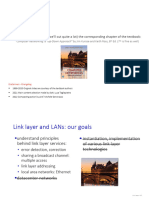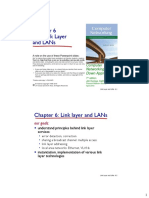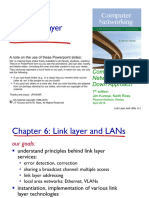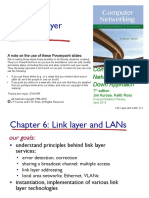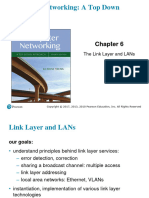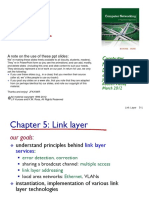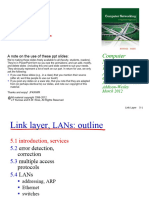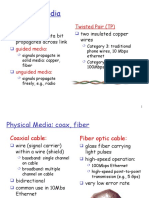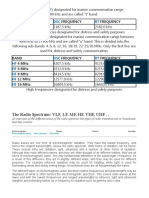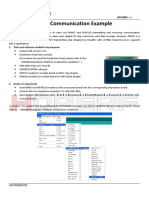0% found this document useful (0 votes)
24 views38 pagesLink Layer & LANs: Key Concepts
Chapter 6 of 'Computer Networking: A Top-Down Approach' covers the link layer and local area networks (LANs), focusing on principles such as error detection, multiple access protocols, and link layer addressing. It discusses various link layer technologies including Ethernet and VLANs, as well as the implementation of these protocols in network interface cards. The chapter also explores the challenges of reliable data transfer and the protocols used to manage multiple access to shared communication channels.
Uploaded by
dushyantkhandelwal4665Copyright
© © All Rights Reserved
We take content rights seriously. If you suspect this is your content, claim it here.
Available Formats
Download as PDF, TXT or read online on Scribd
0% found this document useful (0 votes)
24 views38 pagesLink Layer & LANs: Key Concepts
Chapter 6 of 'Computer Networking: A Top-Down Approach' covers the link layer and local area networks (LANs), focusing on principles such as error detection, multiple access protocols, and link layer addressing. It discusses various link layer technologies including Ethernet and VLANs, as well as the implementation of these protocols in network interface cards. The chapter also explores the challenges of reliable data transfer and the protocols used to manage multiple access to shared communication channels.
Uploaded by
dushyantkhandelwal4665Copyright
© © All Rights Reserved
We take content rights seriously. If you suspect this is your content, claim it here.
Available Formats
Download as PDF, TXT or read online on Scribd
/ 38


